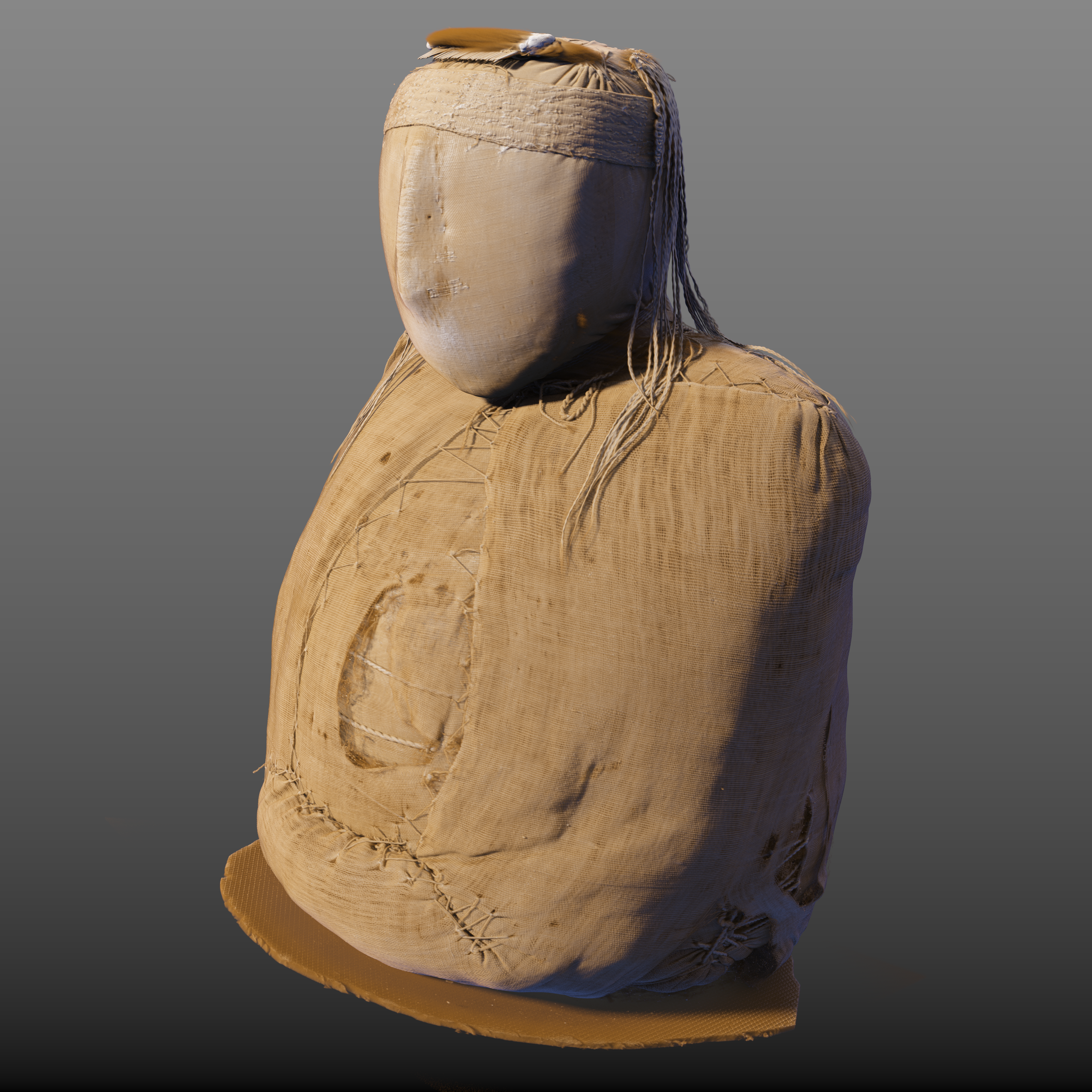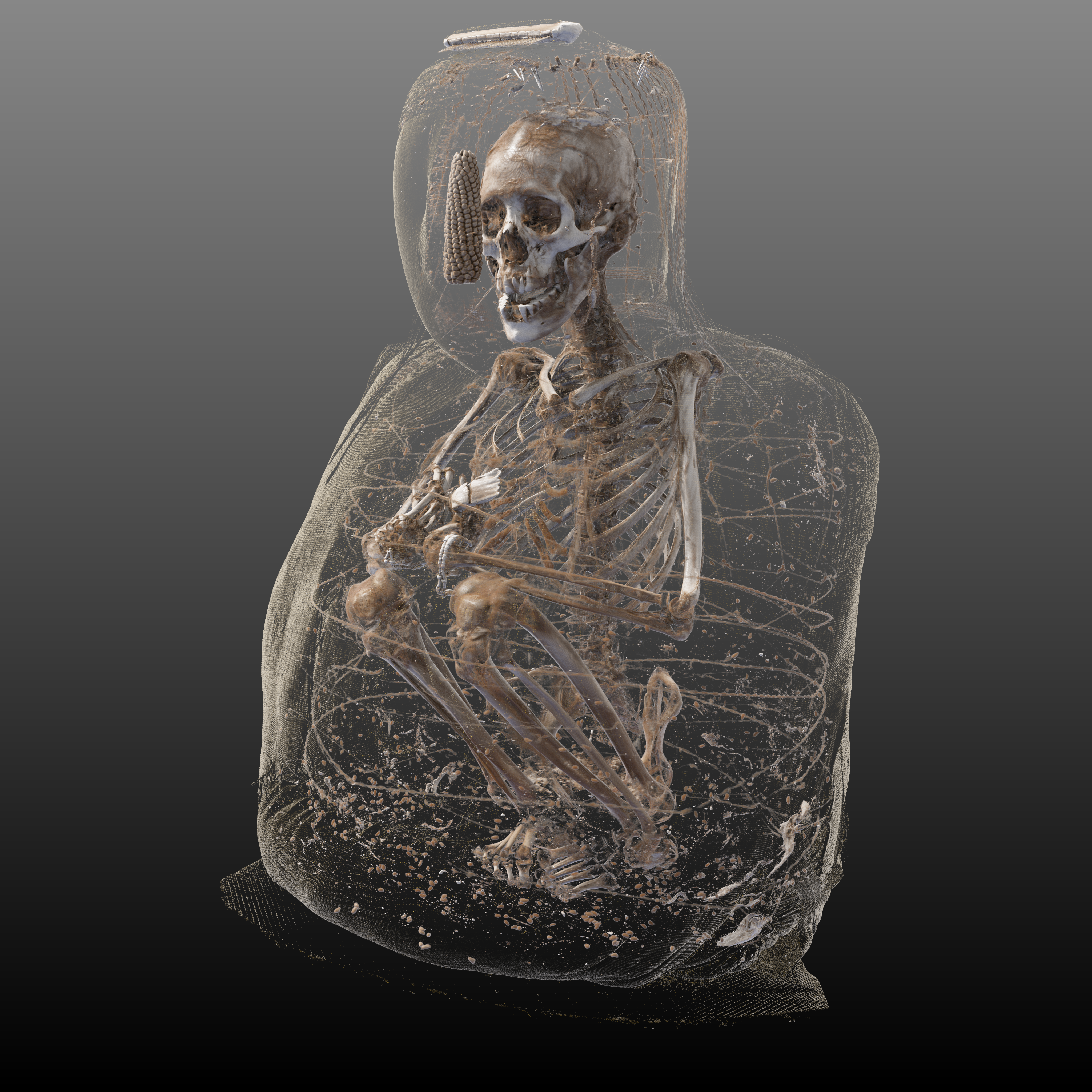One mummy, one research team, one film crew: An exciting day in December 2018 yielded plenty of new insights. As the film crew from Fraunhofer IIS, we had been eagerly awaiting this day, when we would be filming and documenting a fascinating contribution to digitalization in museums.
Digitalization in museums: how we solved the mystery of a Peruvian mummy
08.10.2019
The Fraunhofer Institute for Integrated Circuits IIS, based in Fürth in Germany, has become a world-renowned research center in the field of X-ray technology. Using its XXL CT scanner, researchers have already X-rayed entire cars and freight containers. The 3D X-ray technology is also of particular importance for historical objects. It allows researchers at museums to gain informative insights into these objects without having to open and possibly damage them. Digitalization therefore takes the work performed by museums to a new level. The Deutsches Museum, for instance, had its rocket-powered Messerschmitt fighter plane examined using the 3D X-ray technology developed at Fraunhofer IIS.
Let the X-raying begin

This was now to be followed by the imaging of a Peruvian mummy, probably originating from between the 11th and the 15th centuries When we entered the secure area of the Fraunhofer Development Center X-ray Technology EZRT (a division of Fraunhofer IIS), Professor Tomas Sauer was waiting for us. Sauer leads the research group for knowledge-based image processing at Fraunhofer EZRT and is Professor of Mathematics and Digital Image Processing at the University of Passau. He initiated the examination of the mummy, which had been stored for many years in the Linden Museum’s collection in Stuttgart. Sauer wanted to work with Fraunhofer IIS to study the inside of this exciting and admittedly rather creepy-looking object.
As the doors of the 3D CT system opened, we saw something none of us had expected. When we’d heard that this was about a mummy, we thought it would be a body wrapped in bandages. What we saw, though, was an object that looked like a large sack stuffed with cotton. Part of it was tied off and looked like a head that had been placed on top of the sack. We could make out the suggestion of facial features, such as a nose, and there was braided hair on the head. Astonished, we asked Sauer what exactly we were looking at. He explained that we had been imaging an Egyptian mummy, and that the mummy in front of us was a Peruvian mummy. In Peru, mummies did not have their organs removed before being wrapped in bandages, Instead, they were preserved with all their organs intact in linen sacks stuffed with cotton.
Digital technology reveals precise details

Before the mummy was imaged, it was unclear whether the linen sack really contained a human being, as it only weighed about 18 kg. The X-ray images showed that the sack did contain an entire skeleton. Many details were visible in the images: The person was in a squatting position, with the hands clasped in front of the knees. Owing to the squatting position, the head was indeed in the part of the sack that had been tied off. The rest of the body, including the extremities, was in the larger part. Numerous burial gifts, such as shells, bracelets, and a fan made of feathers, were also visible. Notions regarding the afterlife were very specific in ancient Peru, and the Peruvians imagined the afterlife to be like their present world. They therefore buried food, clothing, and other small items with the deceased person.
The mystery of the bulge that we thought to be a nose was also solved by means of the precise 3D X-ray examination. It turned out to be a very well-preserved corncob that had been placed in such a way as to make the mummy look like it had a nose.
Exciting findings for Fraunhofer IIS and the Linden Museum
The chance to study the mummy in detail using the 3D X-ray technology developed by Fraunhofer IIS provided us with exciting insights into the past and fueled our enthusiasm. Both the museum and Fraunhofer IIS benefit from this project. The museum obtains valuable data for its ongoing study of the object, and Fraunhofer IIS can test and improve its image processing methods. In the Big Picture research project, we are exploring ways to process, evaluate, and exploit these types of large-scale image data. Thanks to newly developed data compression methods, expensive and powerful industrial computers are no longer required to examine and analyze the high-resolution data records – the data compression is so efficient that a standard notebook computer has enough power for this task.
